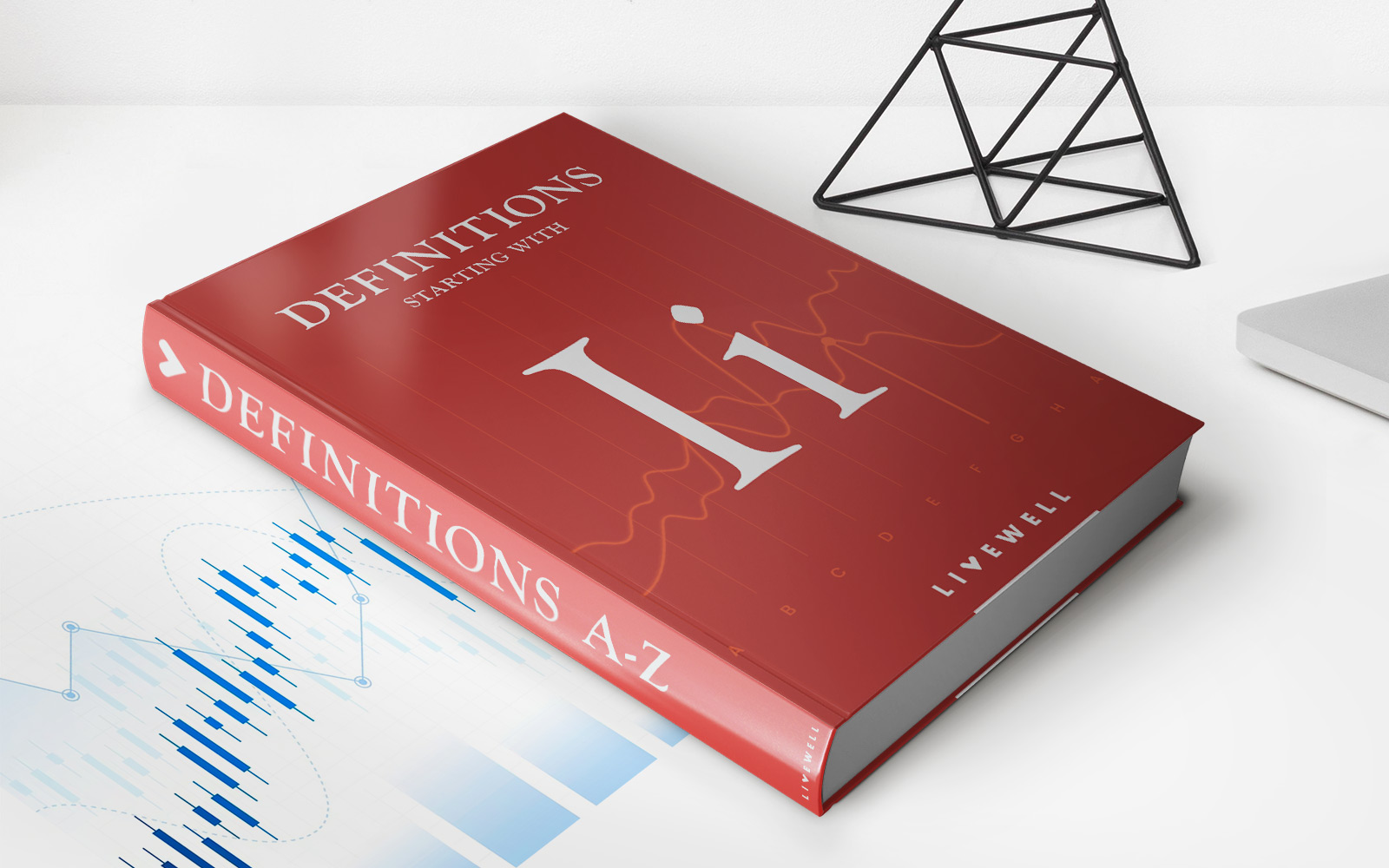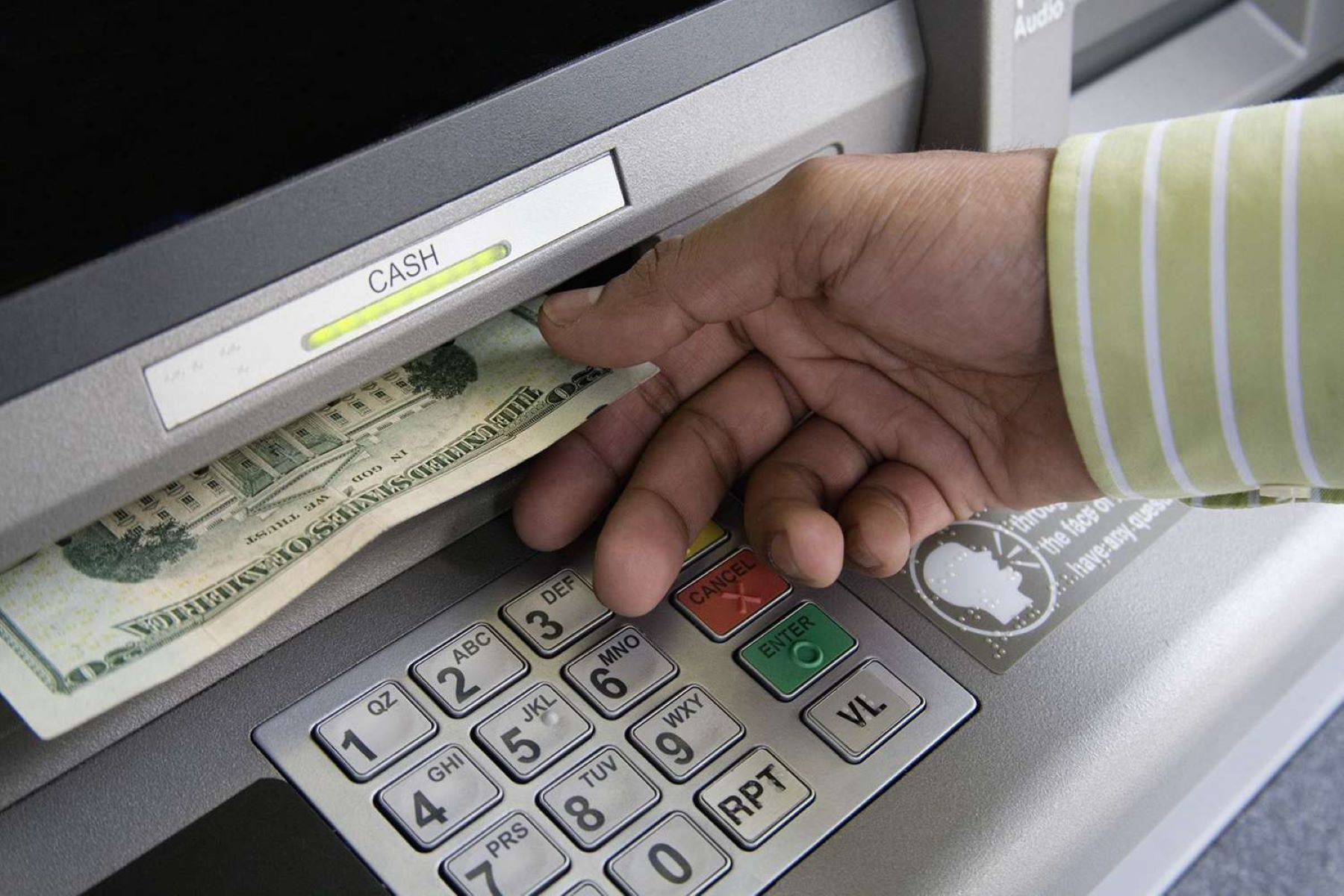

Finance
What Does POD Mean On A Savings Bond
Published: January 16, 2024
Discover what the term "POD" stands for on a savings bond and how it relates to your finances. Unveil the secrets behind this finance acronym now!
(Many of the links in this article redirect to a specific reviewed product. Your purchase of these products through affiliate links helps to generate commission for LiveWell, at no extra cost. Learn more)
Table of Contents
Introduction
When it comes to managing your finances, finding ways to protect and grow your savings is essential. One popular savings tool that many individuals utilize is a savings bond. Savings bonds are a type of government-backed investment that offer a low-risk way to save money over time.
However, as with any financial product, it’s important to understand the various terms and features associated with savings bonds. One term that often comes up in relation to savings bonds is “POD.” If you’ve ever wondered what POD means on a savings bond, this article will provide you with the answers you’re looking for.
Savings bonds are unique because they provide a way to pass on wealth to your loved ones. And that’s where the term POD comes in. POD stands for “Payable on Death,” and it refers to the beneficiary designation on a savings bond.
In simple terms, the POD designation allows you to specify who will receive the proceeds of your savings bond in the event of your death. This feature ensures that your savings are distributed according to your wishes and can provide peace of mind knowing that your loved ones will be taken care of financially.
Now that you have a basic understanding of what POD means on a savings bond, let’s dive deeper into the importance of this designation and how it works.
Understanding Savings Bonds
Before delving into the concept of POD on savings bonds, it’s important to have a clear understanding of what savings bonds are. A savings bond is a debt security issued by the government, intended to raise funds for various public expenditures. These bonds are backed by the government’s promise to repay the bondholder the principal amount plus interest at a future date.
There are two types of savings bonds available: Series EE and Series I. Series EE bonds are fixed-rate bonds that accrue interest for up to 30 years. On the other hand, Series I bonds are inflation-protected bonds that earn interest based on a fixed rate plus an additional rate that adjusts with inflation.
Savings bonds are considered low-risk investments because they are backed by the full faith and credit of the U.S. government. They offer a secure way to save money and can be purchased for as little as $25.
Now that we have a brief understanding of savings bonds, let’s dive into the concept of POD and its significance in relation to these bonds.
What is POD?
POD stands for “Payable on Death,” and it is a beneficiary designation that can be added to a savings bond. Essentially, the POD designation allows you to specify one or more individuals who will receive the proceeds of your savings bond upon your death.
Adding a POD designation to your savings bond ensures that the bond’s value will bypass the probate process and go directly to the designated beneficiary or beneficiaries. This means that your loved ones can access the funds without the need for a lengthy and potentially costly legal process.
For example, let’s say you have a savings bond with a POD designation naming your spouse as the beneficiary. If you were to pass away, your spouse would be able to claim the value of the savings bond without any complications. This can provide financial security and peace of mind during difficult times.
It’s important to note that the POD designation only comes into effect upon the bondholder’s death. Until that time, the bondholder retains full control and ownership of the savings bond. You can change or remove the POD designation at any point during your lifetime, as we’ll discuss later in this article.
Having a POD designation on your savings bond can be especially beneficial if you have specific wishes for how your assets should be distributed after you pass away. It allows you to control who will benefit from your savings bond, ensuring that the proceeds go to the individuals you deem appropriate.
Now that we understand what the POD designation is and its purpose let’s explore its importance in more detail.
The Importance of POD on Savings Bonds
The Payable on Death (POD) designation on savings bonds holds significant importance for bondholders for several reasons. Here’s why having a POD on your savings bond can be essential:
1. Estate Planning:
Adding a POD designation to your savings bond is part of effective estate planning. By specifying the beneficiary, you ensure that your savings bond assets transfer seamlessly to your chosen recipient(s) upon your death. This can help simplify the distribution of assets and avoid potential conflicts among heirs.
2. Avoiding Probate:
One of the primary benefits of having a POD on your savings bond is that it allows the bond’s value to bypass the probate process. Probate is a legal process that determines how a deceased person’s assets are distributed. By designating a POD beneficiary, you can ensure that the savings bond proceeds are directly transferred to the beneficiary without going through probate. This can save time, money, and effort for your loved ones.
3. Privacy:
Another advantage of having a POD designation is privacy. The transfer of savings bond proceeds through a POD designation is a private affair that does not require public recordation. Unlike probate proceedings, which are often public, the POD designation allows for a discreet transfer of assets between the bondholder and the beneficiary.
4. Financial Security:
By adding a POD to your savings bond, you ensure that the identified beneficiary will have access to the funds upon your passing. This can provide financial security to your loved ones during a difficult time and help them cover immediate expenses or long-term financial goals.
5. Flexibility:
Having a POD on your savings bond provides flexibility. You can choose one or multiple beneficiaries, allocate the bond’s proceeds amongst them in specific percentages, or even change the beneficiary designation if your circumstances or preferences change.
Considering the importance of estate planning, the avoidance of probate, privacy, financial security, and the flexibility it provides, having a POD designation on your savings bond is a crucial decision that ensures your wishes are honored and your loved ones are taken care of.
How Does POD Work?
Understanding how the Payable on Death (POD) designation works on a savings bond is essential to harness its benefits effectively. Here’s a breakdown of how POD works:
1. Adding a POD Designation:
When you purchase or own a savings bond, you have the option to add a POD designation. This involves providing the name(s) of the individual(s) or organization(s) that you want to designate as the beneficiary. You can specify one primary beneficiary and one or more contingent beneficiaries to receive the bond’s proceeds in case the primary beneficiary predeceases you.
2. Bond Ownership During Your Lifetime:
As a bondholder, you retain complete ownership and control of the savings bond during your lifetime, even with a POD designation in place. You can continue to redeem or cash in the bond, receive interest payments, or make changes to the POD beneficiary designation as needed.
3. Transfer of Assets:
Upon your death, the bond’s proceeds will transfer directly to the designated POD beneficiary or beneficiaries. This transfer bypasses the probate process and occurs outside of your estate, which means it does not go through the customary distribution of assets determined by a will or court proceedings.
4. Documentation Required:
Once you pass away, the designated POD beneficiary will need to provide the necessary documentation and proof of your death to claim the savings bond’s value. This generally includes the original bond certificate, a certified copy of your death certificate, and identification documents.
5. Distribution of Assets:
Following the submission of the required documentation, the financial institution or the U.S. Treasury will initiate the transfer of the savings bond’s proceeds to the designated POD beneficiary. The beneficiary will receive the value of the bond, including any accrued interest, in a lump sum payment.
It’s important to review and update your POD beneficiary designation periodically to ensure it aligns with your current wishes and circumstances. Life events such as marriage, divorce, the birth of children, or the passing of a beneficiary may require adjustments to the designation. Consult with a financial advisor or legal professional to ensure the POD designation on your savings bond reflects your intentions accurately.
Understanding how POD works on a savings bond empowers you to make informed decisions about your estate planning and financial future.
Benefits of POD on Savings Bonds
Having a Payable on Death (POD) designation on your savings bond offers several significant benefits. Let’s explore some of the advantages of utilizing a POD designation:
1. Easy Transfer of Assets:
By adding a POD designation to your savings bond, you ensure a smooth and efficient transfer of the bond’s proceeds to your chosen beneficiary upon your passing. This bypasses the probate process and reduces any potential delays or complications in distributing the funds.
2. Avoidance of Probate:
Probate can be a time-consuming and expensive legal process. With a POD designation, the savings bond proceeds directly pass to the designated beneficiary without going through probate, saving time, money, and hassle for your loved ones.
3. Privacy:
In contrast to the public nature of probate proceedings, the transfer of savings bond assets through a POD designation is a private transaction. Preserving privacy ensures that the details of your financial affairs and the distribution of your assets remain confidential.
4. Financial Security for Beneficiaries:
The POD designation on a savings bond secures the financial well-being of your chosen beneficiary. In the event of your passing, the beneficiary will have immediate access to the bond’s value, allowing them to cover expenses, pay off debts, or invest in their financial future.
5. Flexibility:
POD designations offer flexibility. You have the freedom to name multiple primary and contingent beneficiaries, allocating the bond’s proceeds among them in specified percentages. Furthermore, you can change or update the POD designation throughout your lifetime if your circumstances or preferences change.
6. Seamless Estate Planning:
Including a POD designation as part of your estate planning strategy ensures that your savings bond assets align with your intended wishes. It allows you to control how your financial resources are distributed after your passing, providing peace of mind and reducing potential conflicts among heirs.
These benefits highlight the importance of utilizing a POD designation on your savings bond. It offers a straightforward and efficient method to pass on your savings and provide financial security for your loved ones.
Potential Drawbacks of POD on Savings Bonds
While there are many benefits to having a Payable on Death (POD) designation on your savings bond, it’s important to be aware of some potential drawbacks. Here are a few considerations to keep in mind:
1. Limited Control:
Once you add a POD designation to your savings bond, you relinquish control over the disposition of those funds after your passing. The designated beneficiary has full ownership rights to the bond and can make decisions regarding its use, which may not align with your original intentions.
2. Inflexibility:
While POD designations offer flexibility in choosing beneficiaries, it can be challenging to make changes once the designation is in place. Depending on the financial institution or government regulations, altering or removing a POD beneficiary designation may require additional paperwork or formalities.
3. Unforeseen Circumstances:
In some cases, the designated POD beneficiary may predecease the bondholder or become incapacitated. It’s important to regularly review and update the POD designation to ensure it reflects your current wishes and circumstances. Otherwise, the bond may pass to unintended beneficiaries or become subject to the probate process.
4. Tax Implications:
Transferring the ownership of a savings bond through a POD designation may have tax implications. The designated beneficiary may be responsible for paying taxes on the accrued interest when they redeem the bond. It’s advisable to consult a financial advisor or tax professional to understand the potential tax consequences associated with the POD designation.
5. Impact on Medicaid Eligibility:
If you or your designated POD beneficiary requires long-term care and relies on Medicaid for assistance, the POD designation on a savings bond may affect their eligibility for Medicaid benefits. Medicaid has strict income and asset limits, and receiving a large lump sum payment from a savings bond could disqualify an individual from Medicaid coverage.
It’s important to carefully consider these potential drawbacks and consult with a financial advisor or estate planning professional to ensure that the inclusion of a POD designation aligns with your overall financial and estate planning goals.
Changing or Removing POD on a Savings Bond
If you have a savings bond with a Payable on Death (POD) designation and wish to make changes or remove the designation, there are specific steps you can take. Here’s what you need to know about changing or removing a POD on a savings bond:
1. Contact the Financial Institution:
Reach out to the financial institution where your savings bond is held to inquire about their specific procedures for changing or removing a POD designation. They will provide you with the necessary forms and instructions to initiate the process.
2. Complete the Required Forms:
The financial institution will typically require you to complete a form or provide a written request to change or remove the POD designation on your savings bond. Make sure to provide accurate and up-to-date information, including the current bond information and the desired changes or removal of the designation.
3. Notarization and Documentation:
In some cases, the financial institution may require the form or request to be notarized. This ensures the authenticity of your signature and the validity of the changes. Additionally, you may need to provide supporting documentation, such as a copy of your identification or any legal documentation proving your authority to make changes to the bond.
4. Submitting the Request:
Once you have completed the necessary forms and provided the required documentation, submit the request to the financial institution. Make sure to follow their specific instructions on where and how to submit the request. It’s recommended to keep copies of all the paperwork for your records.
5. Confirmation and Review:
After you have submitted the request, the financial institution will review the documents and make the requested changes or remove the POD designation. They may contact you for additional information or clarification if needed.
6. Updated Bond Documentation:
Upon the successful completion of the changes or removal of the POD designation, the financial institution will update the bond documentation accordingly and provide you with a new bond certificate or statement reflecting the revised information.
It’s essential to ensure that your updated savings bond documentation accurately reflects the changes or removal of the POD designation. Review the revised documentation carefully and keep it in a secure place along with your other important financial records.
Remember, it’s important to periodically review and update your beneficiary designations to align with your current wishes and circumstances. Life events such as marriage, divorce, or the passing of a beneficiary may necessitate changes to the POD designation. Consult with a financial advisor or estate planning professional to ensure that your savings bond aligns with your overall estate planning goals.
Conclusion
The Payable on Death (POD) designation on a savings bond offers a range of benefits and considerations for bondholders. Understanding what POD means on a savings bond and how it works is crucial for effective estate planning and ensuring the smooth transfer of assets to your chosen beneficiaries.
The POD designation allows you to specify who will receive the savings bond’s proceeds upon your passing. It bypasses the probate process, ensuring a seamless transfer of assets and providing privacy for your financial affairs. Additionally, having a POD on your savings bond provides financial security for your loved ones and offers flexibility in designating one or more beneficiaries.
However, it’s important to consider some potential drawbacks:
POD designations may limit your control over the bond’s disposition, and changes or removal of the designation could have implications regarding taxes and Medicaid eligibility. Regularly reviewing and updating your POD designation is essential to ensure it aligns with your current wishes and circumstances.
If you wish to change or remove a POD designation, contact the financial institution holding your savings bond and follow their specific procedures. Complete the required forms, provide any necessary documentation, and submit the request for review and processing. Once the changes are made, review the updated bond documentation and keep it in a secure place.
In conclusion, the POD designation on a savings bond can provide peace of mind, privacy, and a streamlined transfer of assets to your chosen beneficiaries. It is a valuable tool for effective estate planning and ensuring your loved ones are financially supported during challenging times. However, it’s important to weigh the benefits and drawbacks and consult with professionals when making decisions regarding your savings bond and beneficiary designations.
By understanding and utilizing the POD designation effectively, you can make informed choices and protect your wealth for future generations.














